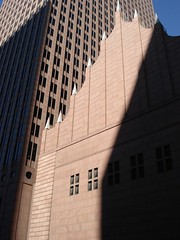In the middle of the 18th century, Europe began to move toward a new style in architecture, literature, and the arts, generally known as Classicism, which sought to emulate the ideals of Classical antiquity and especially those of Classical Greece.[2]
While still tightly linked to the court culture, says Wikipedia, and absolutism, with its formality and emphasis on order and hierarchy, the new style was also a cleaner style—one that favored clearer divisions between parts, brighter contrasts and colors, and simplicity rather than complexity.
The remarkable development of ideas in "natural philosophy" had established itself in the public consciousness with Newton's physics taken as a paradigm: structures should be well-founded in axioms and be both well-articulated and orderly.
This taste for structural clarity worked its way into the world of music, moving away from the layered polyphony of the Baroque period, towards a style where a melody over a subordinate harmony—a combination called homophony—was preferred.[3]
This meant that the playing of chords, even if they interrupted the melodic smoothness of a single part, became a much more prevalent feature of music. This, in turn, made the tonal structure of works more audible.
Classical music has a lighter, clearer texture than Baroque music and is less complex.
Variety and contrast within a piece became more pronounced than before. Variety of keys, melodies, rhythms and dynamics (using crescendo, diminuendo and sforzando), along with frequent changes of mood and timbre were more commonplace in the Classical period than they had been in the Baroque. Melodies tended to be shorter than those of Baroque music, with clear-cut phrases and clearly marked cadences. The Orchestra increased in size and range; the harpsichord continuo fell out of use, and the woodwind became a self-contained section. As a solo instrument, the harpsichord was replaced by the piano (or fortepiano).
Subscribe to:
Post Comments (Atom)





No comments:
Post a Comment